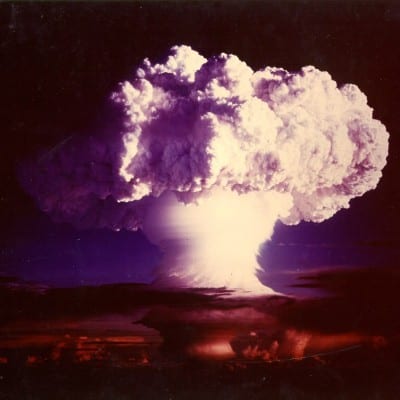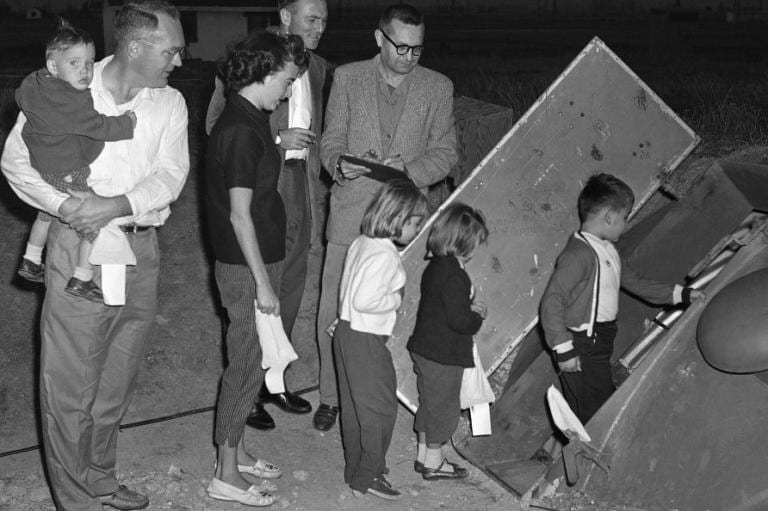
I don’t remember who sent me this image many months ago, but perhaps people out there need a bit of Hadean humor these days.
A metaphor for the COVID-19 pandemic and our response to it occurred to me last night, and I want to try it out here, to test drive it in order to see how it works. Feedback is welcome.
Many, many years ago, I read an article by the late NASA astronomer and space scientist Robert Jastrow, in which he argued that thermonuclear weapons were essentially obsolete, or soon would be. I’ve never forgotten it. I’m not taking the time right now to track it down; if somebody wants to do that, it would be fine with me.
What did he mean by suggesting that thermonuclear weapons were obsolete?
As I recall it, his argument went this way: A generation or two ago, our bombs and missiles were so inaccurate that, in order to make sure that we actually destroyed our target, they had to be massive, or to carry massive warheads. With a big enough explosion we were pretty certain to take out the places that we intended to hit. Those older weapons were terrible, of course, partly because they were very blunt instruments. As we moved toward more precisely accurate missiles and smart bombs, though, we were increasingly able to drop our explosives either directly on the target or, at least, very close to it. Which meant, in his view, that 100-megaton hydrogen bombs were no longer necessary, if one simply wanted to eliminate, say, an enemy’s command-and-control center or a hostile air force base or a submarine facility or a munitions factory or a power plant. (Of course, enormous hydrogen weapons would still be desirable if one’s goal were simply to enact one’s hatred, to kill a lot of civilians.)

(U.S. federal government public domain photograph)
In our war with the coronavirus, it seems to me that we are still back in the days of massive and massively destructive thermonuclear weapons. We are constrained to be so, as we were then, by our ignorance.
Unable, because of our inability to do sufficient testing, to know who actually has COVID-19, we’re forced to use the very blunt instrument of massive social isolation, telling everyone to stay home and avoid everyone else. Thus, we disrupt our economies and, since we rely to a large degree on voluntary compliance, we still run the risk that the disease will spread beyond our control, overwhelming our healthcare systems and killing many of us.

U.S. government public domain photo
If, though, by means of testing, we were able to reliably identify those who actually have the coronavirus and then to quarantine them, the massive and blunt instrument of complete social shutdown would be unnecessary — or, at least, could be of relatively short duration. Pending the creation of a cure, though, and so long as we lack adequate testing and still have people out there transmitting the virus, social distancing (and economic paralysis) will and should and must continue.












